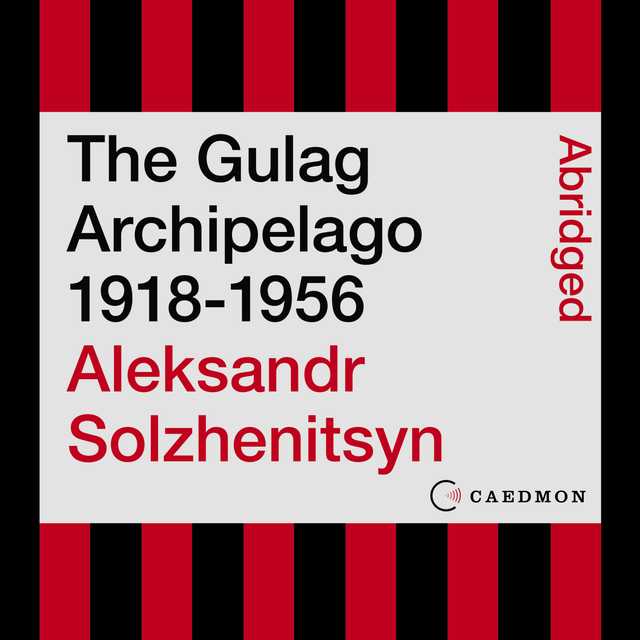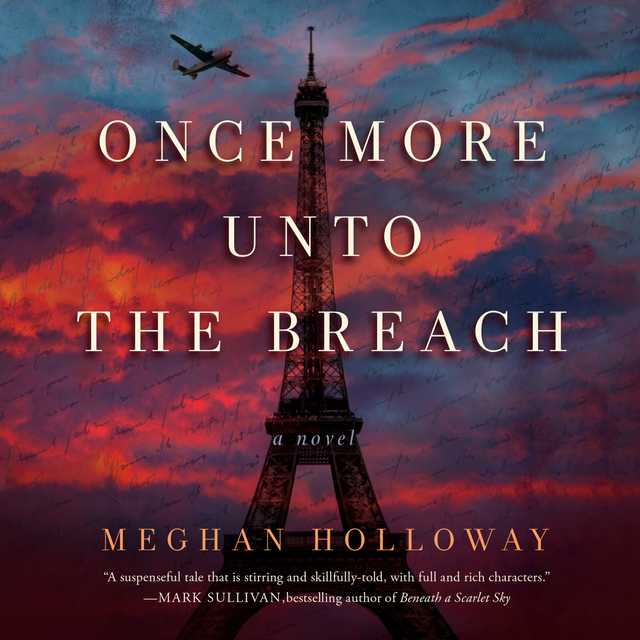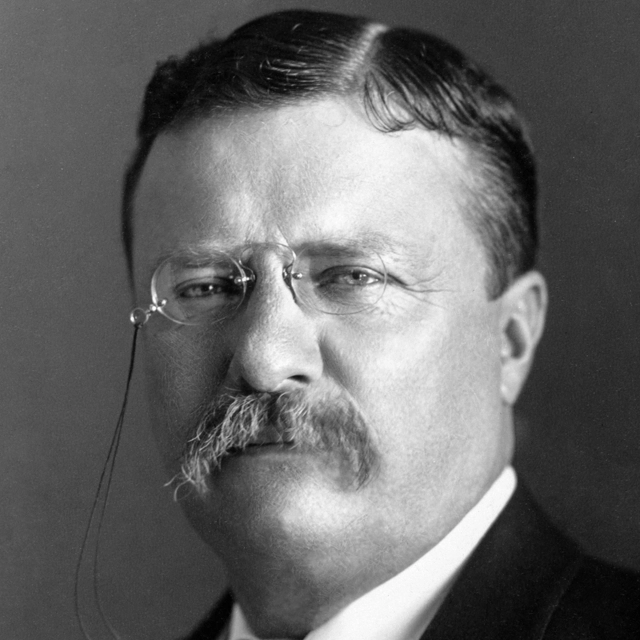Recommended by 1 experts
The Gulag Archipelago 1918-1956 Audiobook Summary
“BEST NONFICTION BOOK OF THE 20TH CENTURY.” —Time
“It is impossible to name a book that had a greater effect on the political and moral consciousness of the late twentieth century.” –David Remnick, The New Yorker
The Nobel Prize winner’s towering masterpiece of world literature, the searing record of four decades of terror and oppression, in one abridged volume (authorized by the author). Features a new foreword by Anne Applebaum.
Drawing on his own experiences before, during and after his eleven years of incarceration and exile, on evidence provided by more than 200 fellow prisoners, and on Soviet archives, Solzhenitsyn reveals with torrential narrative and dramatic power the entire apparatus of Soviet repression, the state within the state that once ruled all-powerfully with its creation by Lenin in 1918. Through truly Shakespearean portraits of its victims-this man, that woman, that child-we encounter the secret police operations, the labor camps and prisons, the uprooting or extermination of whole populations, the “welcome” that awaited Russian soldiers who had been German prisoners of war. Yet we also witness astounding moral courage, the incorruptibility with which the occasional individual or a few scattered groups, all defenseless, endured brutality and degradation. And Solzhenitsyn’s genius has transmuted this grisly indictment into a literary miracle.
“The greatest and most powerful single indictment of a political regime ever leveled in modern times.” –George F. Kennan
“Solzhenitsyn’s masterpiece. . . . The Gulag Archipelago helped create the world we live in today.” –Anne Applebaum, Pulitzer Prize-winning author of Gulag: A History, from the foreword
Other Top Audiobooks
The Gulag Archipelago 1918-1956 Audiobook Narrator
Ignat Solzhenitsyn is the narrator of The Gulag Archipelago 1918-1956 audiobook that was written by Aleksandr I. Solzhenitsyn
After serving as a decorated captain in the Soviet Army during World War II, Aleksandr I. Solzhenitsyn (1918-2008) was sentenced to prison for eight years for criticizing Stalin and the Soviet government in private letters. Solzhenitsyn vaulted from unknown schoolteacher to internationally famous writer in 1962 with the publication of his novella One Day in the Life of Ivan Denisovich; he was awarded the Nobel Prize in Literature in 1968. The writer’s increasingly vocal opposition to the regime resulted in another arrest, a charge of treason, and expulsion from the USSR in 1974, the year The Gulag Archipelago, his epic history of the Soviet prison system, first appeared in the West. For eighteen years, he and his family lived in Vermont. In 1994 he returned to Russia. Aleksandr Solzhenitsyn died at his home in Moscow in 2008.
About the Author(s) of The Gulag Archipelago 1918-1956
Aleksandr I. Solzhenitsyn is the author of The Gulag Archipelago 1918-1956
More From the Same
- Author : Aleksandr I. Solzhenitsyn
- March 1917
- The Gulag Archipelago Volume 1
- The Gulag Archipelago Volume 3
- In the First Circle
- The Gulag Archipelago Volume 2
- Publisher : Caedmon
- Dubliners
- Julius Caesar
- The Two Gentlemen of Verona
- The Tempest
- Measure for Measure
The Gulag Archipelago 1918-1956 Full Details
| Narrator | Ignat Solzhenitsyn |
| Length | 21 hours 53 minutes |
| Author | Aleksandr I. Solzhenitsyn |
| Category | |
| Publisher | Caedmon |
| Release date | October 13, 2020 |
| ISBN | 9780062941619 |
Subjects
The publisher of the The Gulag Archipelago 1918-1956 is Caedmon. includes the following subjects: The BISAC Subject Code is Literary Criticism, Russian & Former Soviet Union
Additional info
The publisher of the The Gulag Archipelago 1918-1956 is Caedmon. The imprint is Caedmon. It is supplied by Caedmon. The ISBN-13 is 9780062941619.
Global Availability
This book is only available in the United States.
The Gulag Archipelago 1918-1956 is recommended by
Jordan Peterson
Jordan Peterson is a psychologist, author, & media commentator.
Recommends this book
Goodreads Reviews
Manny
December 05, 2008
Solzhenitsyn systematically goes through the horrors of the Soviet slave labour camps, one of the blackest chapters in world history. I read this book as a teenager, not long after it came out, and I was appalled that my parents had presented the Soviet Union as anything other than a monstrosity. For some reason, leftist people wouldn't properly admit it for a long time. I still can't quite understand why. If you feel any shadow of sympathy for Soviet Russia, read Solzhenitsyn and you will be cured. One of the first myths he explodes is that it was all Stalin's fault, and that Lenin was basically a good guy. Lenin just happened to die early, so it wasn't as obvious that he was equally to blame. Solzhenitsyn recounts a comparatively minor and unknown incident from the revolution, where Lenin brutally orders some railway workers to be executed for not fully cooperating with the Bolsheviks. As he comments: just for this one episode, Lenin fully deserved to be shot. He was responsible for dozens of much worse things.
Mike (the Paladin)
November 11, 2016
I read this in 1974 in a bad situation in my life. This put "a bad situation" in America in a totally new light. I wish more Americans would listen and have listened to Solzhenitsyn.Update: I don't know how many of you have followed the...discussion that has been going on here but it inspired me to extend this review a little. The above is the original review in which I simply urged people to read the book for themselves as it has much to say and is applicable in many ways to events happening now.The book traces the history of the Soviet Gulag and then the willing "refusal to look" at the Gulag system (that went on till the '80s well after the book's publication).I still recommend this book I doubt anyone will have trouble seeing the resemblance between the Gulags and the Concentration Camps of the Third Reich...unless of course by willful ignorance. There has also been a suggestion that Solzhenitsyn was antisemitic. This apparently came from the controversy over his book Two Hundred Years Together where he says that "some" Jews were as much perpetrators as victims in Russia. I can't take a stand on this but so far as I can see it's not antisemitism it's simply part of the book. It was intended to be a comprehensive history of Jews in Russia.So far as THIS book goes I still recommend it and suggest as I do about all books that it be approached while thinking.
Mikey
March 12, 2007
Given its historical importance, I fully expected that The Gulag Archipelago would be a lofty read. What I didn't expect was that it works so well as a story. Instead of being a straight history book, Gulag lies somewhere between journalism and history, and Solzhenitsyn's narrative voice is familiar and engaging. The book feels less like a history lesson, and more like a conversation with a good friend who knows how to put together and express an interesting, important, heartbreaking, and unforgettable story. A narrative about the Soviet prison camps seems like it would be so weighty as to be unreadable, but Solzhenitsyn makes it surprisingly palatable. It's quite refreshing when you read a classic for the first time, and instantly understand where all the hype came from.
Sweetwilliam
February 15, 2021
I view people that cling to the tenets of communism the same way I view Holocaust deniers. From the Bolsheviks of 1917 to the turmoil in Venezuela of 2017; Communism is as Churchill said; the equal sharing of misery. The pages of Solzhenitsyn’s Nobel Prize winning masterpiece are full of misery. Solzhenitsyn paints a picture for the naïve westerner of the backbone and main pillar of Soviet Socialism: The gulag. The purpose of the network of gulags in the Soviet Union is to 1. Intimidate the masses so that they dwell in a constant state of fear and 2. To provide the nation state with an endless supply of slave labor. From the pages of this book you will learn that communism is probably the cruelest form of government in the history of humankind. Solzhenitsyn’s writing is first hand. He was imprisoned for 8 years after being accused of writing letters that were critical of Stalin. He wrote these letters while serving in the Red Army during WWII. Being able to tell his story and that of his fellow zeks(convicts) was the motivation used by Solzhenitsyn to survive a brutal prison system designed to systematically kill it's inhabitants. His writing style is angry and he uses sarcasm to describe the system of Soviet Gulags that make Tsarist Russia look like the Cub Scouts in comparison. It is not an easy read. One thing that makes it a difficult read is that that the author rambles on and repeats himself. Solzhenitsyn apologizes for this but he explains he was never able to proofread the manuscript. In fact, he never saw all of his notes in one place. He had written this book and hid it in pieces all over the Soviet Union. He was raided by the KGB while in the process of smuggling the pieces out of the country for publication. So please forgive the author if he repeats himself and makes a few errors. He wrote the book while living in a police state and didn’t have the luxury of being able to proofread it. THIS IS HOW YOU HAVE TO WRITE A BOOK WHEN YOU LIVE IN THE SOVIET UNION!!! For this reason, make sure you select the abridged version. This book is full of horrific but interesting stories. Many are laughable if they weren't so cruel. The NKVD (the precursor to the KGB) would observe a mass meeting. Clapping would commence at the mere mention of comrade Stalin’s name. The ovation would last for 15 minutes or more. People applauding would quite literally pass out rather than be the first one to stop clapping. Finally, one of the factory general managers stopped clapping because, after all, this was ridiculous. There was an agenda to keep. After the gathering the factory manager was arrested. This was how the NKVD separated out the leaders. The Soviet Union only wanted sheep. Leaders were dangerous and sent to the gulag. There is another story about the man who was struggling carrying a mass produced bust of Stalin. The bust was too heavy and he had no way to carry it properly so he tied a rope around Stalin’s head and slung it over his shoulder. The man was given a 10 year sentence for terrorism. Still another man was given 10 years for draping his hat and coat on a bust of Lenin. There are endless stories about how the zeks (convicts) and the 58’s (political prisoners) were coerced into confessions and sentenced without a trial for political crimes they didn’t commit. When the suspect were charged with a crime it would be in code. When the citizen asked “what is code 58-[XYZ]” they were told by their interrogators “that is for us to know.” During interrogations, the arrested argued that they had fought against the Germans or fought in the Revolution and their interrogators would say that “that is another matter.” Please note that I did not use the term “suspects” because there were no suspects. If arrested, you were guilty. These were not isolated incidents. Solzhenitsyn said that almost every family had at least one family member or more incarcerated in one of the many islands of prisons throughout the Soviet Union. The zeks were fed a ration that could not sustain them when subjected to backbreaking labor. They were forced to work hard labor 7 days a week and often 16 hour days even if temperatures fell to -60˚F. The author tells of a canal built to the black sea where a quarter million zeks were killed in the process. Solzhenitsyn refused to compare the building of the canal to the building of the pyramids because, as he says, the difference was that the Egyptian slaves were at least given contemporary technology while the Soviets used only primitive technology! Trees were cleared by tying ropes to the tops of them and having gangs of zeks wiggle the tree until it could be toppled over. The canal was dug by pick and shovel and the frozen earth was carried away in wheel barrows or in a sack carried over the shoulder. People were dead from exhaustion, starvation, and by exposure and froze to death where they fell. The useless canal that ended the lives of so many was never even utilized. This and other things built by slave labor and managed by central government planning were most often inferior and shoddy. Solzhenitsyn argues that peasants of Tsarist Russia were far better off than peasants living under Soviet rule. He cites the outrages that led to revolution and uses statistics to demonstrate how these outrages pale in comparison to the modern Socialist State and the system of Gulags. The Russian peasants were far, far, far better off before Lenin and Stalin came along. Yes, the peasants were slaves prior to 1867 but they got Sundays off and several Christian Holidays off. There were far fewer political prisoners and capital punishment was relatively rare. Ironically, all of these things – abject slavery, political prisoners, and capital punishment – inspired the Revolution. Lenin – who had never pushed a wheelbarrow or worked a pick or shovel – thought it was a good thing for prisoners to work rather than sit idle. The gulag was his idea. Millions upon millions of the former peasants – some who had even fought in the revolution - were rounded up and convicted as political prisoners for such terrible crimes as “having a defeatist attitude.” Many were executed there on the spot but others were executed very slowly in the work gangs of the gulag.I found the following argument very interesting: Solzhenitsyn remarks about how West Germany had convicted former Nazis for war crimes and crimes against humanity. By 1966, West Germany had convicted 86,000 of them. He said that the Soviets loved to read about this in the paper. Each person would express glee each time a Nazi was sentenced. He said if the West Germans convicted 86,000 than the Soviet Union should proportionately convict 250,000. However, only 10 men total in the Soviet Union were ever convicted of crimes against citizens. Solzhenitsyn cries out in the pages of this book that the killers of millions of people walk among us every day. He said that when he brings this up, he is told that he shouldn’t dredge up the past. Solzhenitsyn contends that Soviet society needed the healing that it would provide when these men and women would repent and confess for their terrible sins for incarcerating, torturing, and murdering their own citizens. He argued that the Soviet Union needed this healing just like the Germans experienced. I could go on and on about the destruction of the Kulaks, political prisoners as young as 6-years old, a system of informants and stool pigeons, prison demonstrations and work stoppages that were settled under the tracks of T-34 tanks and strafing planes… but I have had enough. Communism disgusts me. Gulag Archipelago is a fifty year old book. But it is timely reading. Over 40% of millennials surveyed say that they would prefer a socialist form of government over capitalism. Inside Russia, I am told that the youth yearn for the old days. Closer to home, the local high school has allowed the children to start a communist club. Isn’t that nice? Imagine the outrage if the school allowed the students to start a Nazi club? Maybe all the world’s “useful idiots” (as Lenin used to call them) have need to read Solzhenitsyn’s masterpiece?
Amor
October 24, 2016
FIVE EXPANSIVE BOOKS SET IN CLOSE QUARTERS (#3)This summer, the Wall Street Journal asked me to pick five books I admired that were somehow reminiscent of A GENTLEMAN IN MOSCOW. To that end, I wrote on five works in which the action is confined to a small space, but in which the reader somehow experiences the world. Here is #3:In 1945, Alexander Solzhenitsyn, an officer of the Russian army and recipient of the Order of the Red Star, was arrested for including criticisms of Stalin in his personal letters. Having been interrogated in the Lubyanka, he was sentenced to eight years of hard labor and shuttled off to the remote and inhospitable wilds of his own country where, as he puts it, “the sooner you get used to being without your near and dear ones, and the sooner they get used to being without you, the better.”But faced with interment under unspeakable conditions, Solzhenitsyn makes an extraordinary choice: rather than succumb to bitterness and despair, he determines to pursue the richness of the human experience through conversations with his fellow inmates. Where are they from? Why were they arrested? What happened at their trial? Who did they leave behind? What do they miss? And what keeps them going now? Years later, the vast catalog of these interviews stored away safely in Solzhenitsyn’s memory became the basis for one of the most harrowing, inventive, and subversive works of the 20th century: the “experiment in literary investigation” he called The Gulag Archipelago. With every element of liberty, every sensation of color, every hint of festivity stolen from him, Solzhenitsyn uncovers the richness of the human experience and the resilience of the human spirit. Though you may never face incarceration, the author’s advice to the new prisoner is valid just the same: “Own only what you can always carry with you. Know languages, know countries, know people. Let your memory be your travel bag… Look around—there are people around you. Maybe you will remember one of them all your life and later eat your heart out because you didn’t make use of the opportunity to ask him questions. And the less you talk, the more you’ll hear.”
Paula M.
July 25, 2022
Own only what you can always carry with you: know languages, know countries, know people. Let your memory be your travel bag.Soljenítsin Há livros que nunca deveriam ter sido escritos, mas que devem ser lidos. Uma obra e um homem por trás dela surpreendentes! Soljenítsin dedicou-se a escrevê-la a partir de 1965, num lugar secreto na Estónia. Durante dois invernos seguidos- 65 dias no primeiro e 81 no segundo- escreveu, escreveu e só escreveu. Sozinho, sem vizinhos, cheio de precauções e com pouco mais do que alguma lenha e comida que caçava, fê-lo em memória de todos os torturados e mortos no Gulag.É extraordinária a resiliência do autor não só por ter sobrevivido aos campos de trabalho corretivo e a um tumor canceroso (quando era ainda prisioneiro), mas tb por se propor a reviver e a sentir novamente a dor das atrocidades. A partir da sua experiência e principalmente do testemunho de 227 pessoas, que lhe chegaram em forma de relatos , recordações e cartas , criou um extenso livro de História , de memórias pessoais , de reflexão política e filosófica. O Arquipélago está dividido em sete capítulos ( A Indústria Prisional / Movimento Perpétuo / Extermínio pelo Trabalho / A Alma e o Arame Farpado / Os Trabalhos Forçados / O Desterro / Não há Estaline), que se subdividem em capítulos menores. O Gulag - referido na obra como a espátula gigantesca, o tumor canceroso; o lado escuro das nossas vidas; o fígado dos acontecimentos - era o sistema dos campos de trabalho forçado. A ' Alma Mater' do Gulag, expressão de Soljenítsin, são as ilhas Solovki, onde um mosteiro da Igreja Ortodoxa Russa foi transformado no primeiro campo de trabalho por decreto de Lenine. Estaline deu asas à insanidade e esticou milhões de quilómetros de arame farpado por todo o país, nascendo assim um 'arquipélago' tenebroso. Soljenítsin foi preso, aos 26 anos, em 1944, devido a correspondência interceptada pela censura. A um amigo da escola referia- se a Estaline como o Cabecilha por ter traído a revolução, pela deslealdade e crueldade. Não se podia sussurrar quanto mais escrever o que se pensava, por isso enfrentou o Artigo Cinquenta e Oito do código penal. Era com ele que se condenavam os ' inimigos do povo' ( conceito usado pela primeira vez neste artigo) , os suspeitos de atividades contra-revolucionárias. Foi com ele que milhares de inocentes tiveram acesso rápido e direto ao inferno. Era-se preso por qualquer coisa e por coisa nenhuma : por se ter um carrinho de linhas, por se pertencer a um grupo ou classe social, por se chegar atrasado ao trabalho, por se ser esteta (10 anos!) e até por se ser parecido com Estaline! Os indígenas do Gulag morriam de exaustão e também de escorbuto,tuberculose, fome, tortura, distrofia alimentar, edema de carência ou por estarem 1 milímetro desalinhados da fila ( era-se reeducado eficazmente com um tiro! ). Grandes obras foram construídas pelos zeks a custo zero, por isso os campos eram economicamente vantajosos. A primeira grande construção foi a do Bielomorkanal . Estaline forneceu as diretrizes: " o canal deve ser construído num curto prazo e ficar barato" . Assim, um canal com 227 km de comprimento, do Mar Branco ao Báltico, ficou pronto em 22 meses à custa de 30 mil homens. Foi inaugurado no 1* de Maio. (O canal do Suez com 160 km foi construído em 10 anos e o do Panamá , com 80 km, em 28) .No campo de Kolimá , na Sibéria, era dia de trabalho com 45 ou 50 graus negativos. Os presos, protegidos com farrapos, trabalhavam as mesmas horas que nos outros campos , 16 ou mais. Soljenitsin foi meticuloso no relato que nos deixou. Nada ou quase nada do que se viveu entre 1918 a 1956 foi esquecido. Não há nenhum monumento no seu país em memória destas vítimas. Deixou-lhes ele este tributo. Nestas páginas, o Cabecilha é também o Grande Celerado ou ironicamente, o Tigre Brincalhão , o Amigo, ou o Genial Estratega de todos os tempos. Quis o Amado Mestre ficar conhecido como Stalin, que significa "homem de ferro". De ferro era, mas a sua mãe queria-o mais maleável ( seminarista!...)
aPriL does feral sometimes
April 09, 2022
I am surprised, no, shocked actually, at how perfectly constructed, researched and organized Aleksandr I. Solzhenitsyn's 'The Gulag Archipelago' is. He methodically describes the entire scheme developed in the Soviet Union from being arrested to examination and conviction in a legal court of judges to transportation to the awful Siberian prisons. Stalin perfected this legal political police state in order to legally murder or enslave millions of Russian citizens, but he only continued what others began. I have no doubts the Communist revolutionaries used communism like a drug or a religion to develop a religious and sexual ecstasy in themselves. Destroying free will and independence in their victims involved lots of nakedness and torture and starvation - to break down pride in their victims (and do what to watchers, hmmmm). Their version of communism became a legalized tool to utterly destroy any tendency to think for oneself in any human head, especially brains resistant to religious ecstasies.The novel '1984' 1984 is based on historical fact, gentle reader. The Soviet Union's history.This is a stomach-churning story of insanity and torture, gentle reader. Solzhenitsyn's scholarship cannot deaden the horror of a police state. Unlike the Nazis, the Communist revolutionaries passed laws which were totally bonkers. This was done in order to ensnare ANYONE who actually expressed any sort of opposition, or who might be thinking in the future of opposing, or maybe they simply cross their legs looking like they oppose the revolutionaries. These insane laws fed victims into an assembly line of institutionalized slavery madness by Stalin and his government. Perhaps the communists were trying to literally create metalic robots from living flesh through torture and starvation. Survivors were certain to be broken mentally after the systemic methodologies the revolutionaries developed to make human brains incapable of all thought.Honestly, if the revolutionaries and Stalin really wanted to only transform people into the type of citizen they wanted, they should have driven spikes into the eyes of their entire population. It works.Lobotomy: https://en.wikipedia.org/wiki/LobotomyInstead, I think they WANTED to keep their people busy in the daily work of torture and killing. What, I can hear you say, that is crazy! Yes, gentle reader, I agree. Yet it happened and was sustained by a human government and an entire country of compliant citizens. The Soviet Union later invaded all of eastern Europe and influenced many countries all over the world to change their governments into similar police states the Soviets had perfected. It is a mistake to blame the political theory of communism for this, gentle reader, in my humble opinion. This is male genetics gone wild. These are men given license to act on those impulses to make war on their fellows and control other people's bodies through violence. In 'The Gulag Archipelago' it was a Communist government. This madness has also been expressed by:-the Catholic Church https://en.wikipedia.org/wiki/Inquisi..., -America's Red Scares https://en.wikipedia.org/wiki/Red_Sca... and Salem witch trials https://en.wikipedia.org/wiki/Salem_w..., -Idi Amin's Uganda https://en.wikipedia.org/wiki/Idi_Amin, -Cambodia's Khmer Rouge https://en.wikipedia.org/wiki/Khmer_R..., -China's Cultural Revolution https://en.wikipedia.org/wiki/Cultura...-North Korea https://en.wikipedia.org/wiki/North_K...and many many many many many other instances of human history, too numerous to list. Truly. Too numerous to list. Think about it.The insanity of these systemic institutionalized regimes of terror is clear to see. The mistake you might be making every day, gentle reader, is to assume this stuff could never happen again. It will happen again. It will.I strongly recommend reading 'The Gulag Archipelago' at least once in your life. At minimum, read '1984', a shorter fictional read which nonetheless mirrors the reality of many many many instances of human history.
Gary
May 29, 2016
One of the most monumental accounts of one of the cruellest ideologies of history,this book should be read by allLayer by layer Solzhenitsyn exposes the hideous system of imprisonment ,death and torture that he refers to as the 'Gulag Archipelago'He strips away that the misconception of the good Tsar Lenin betrayed by his evil heirs and exposes how it was Lenin and his henchmen who put into place the brutal totalitarianism , which would be inherited and continued by StalinIn fact the only thing that Stalin really did differently was to introduce a more personalised ,Imperial style of rule but otherwise carried on the evil work of LeninIt was Lenin who imprisoned the Cadets (Constitutional Democrats) , Mensheviks,Social Democrats,Social Revolutionaries Anarchists and independent intelligentsia and had many killedIn this way he completely destroyed all opposition to Bolshevik hegemonyUnder Lenin the persecution started of anybody convicted of religious activity and the complete destruction of the church in RussiaAnd it was Lenin who began the genocide of whole ethnic groups that would later gain momentum under StalinUnder the Communist system all that is spiritual or not purely material in nature is destroyed.And we discover what a horror Marx's idea of 'dialectic materialism ' really isBut I cannot describe the horrors which Solzhenitsyn outlines in this book :the hideous torutres,the slave markets selling of young women into sexual slaverySolzhenitsyn describes how the prison system of the Tsarist system was compassionate by comparison but the mild abuses of Tsarist imprisonment where reacted to with a shrill outcry that never greeted the horrors of Bolshevism and CommunismAs he says in his ever present biting sarcasm "Its just not fashionable,just not fashionableAnd even today,even after the fall of Communism in Europe (though its iron grip remains strong in parts of Asia,Africa and in Cuba) its still not regarded as fashionable to highlight the horrors of Comm
Δx Δp ≥ ½ ħ
January 29, 2013
Apa yang harus saya ceritakan tentang buku ini? Tak ada--atau lebih tepatnya tak bisa. Buku ini harus dibaca sendiri.Nyaris tak ada buku yang bisa menyajikan teror semenggelisahkan buku ini. Banyak orang yang tersedu-sedan saat membaca buku tentang kekejaman holocaust seperti di buku Diary of Anne Frank atau Night. Tapi kalau mereka sudah membaca buku ini, mereka akan menangis guling-guling. Bercerita tentang kengerian kamp konsentrasi buat para "si penjahat malang" (baca: siapapun yang dianggap menentang keinginan Si Kumis Besar a.k.a Stalin) yang bernama Gulag, buku ini sudah menimbulkan kengerian bahkan sejak halaman pertama. Gulag jauh lebih mengerikan daripada penjara manapun buatan manusia lainnya--bahkan Iblis pun tak mungkin bisa sekejam ini. Tak akan cukup kata di review ini buat menuliskan kengeriannya. Baca sendiri! Dan bersiaplah untuk mimpi buruk yang tak akan pernah berakhir.Gulag merupakan versi neraka di bumi yang bahkan lebih kejam daripada neraka versi agama langit. Di neraka-Nya, penghuninya masih diberi makan berupa onak duri dan air nanah bercampur logam mendidih. Di Gulag, para tahanannya sama sekali tak diberi makan kecuali sisa sampah yang bahkan hewan paling putus asa pun tak akan mau memakannya.Stalin telah membuat Hitler terlihat seperti bocah bengal 7 tahun yang hanya bisa melampiskan amarahnya dengan menyiksa kecoa malang. Buku ini sama sekali bukan bacaan yang menyenangkan. Teror, nestapa, dan kebrutalan yang dihadirkannya akan menghilangkan selera makan, meremukredamkan perasaan, dan meluluhlantahkan pertahanan otot air mata. Buku ini akan menantang pembacanya dengan pertanyaan paling fundamental tentang aspek moral kemanusiaan: "Apakah manusia itu pada hakikatnya terlahir sebagai seorang yang baik? Atau malah jahat?" dan yang paling menohok, "mana yang lebih utama, menyebarkan derma kebaikan atau mencegah angkara kejahatan? Mengapa kita lebih mudah melakukan kebaikan dengan gagah namun sering kali tak berdaya mencegah kejahatan yang tampak mudah dibantah?".Ketika saya membaca buku Nyanyi Sunyi Seorang Bisu 1, saya merasa stress. Ketika membaca buku ini, saya merasa depresi. Dengan tema yang sama--memoar menyakitkan tentang perjuangan orang-orang yang bertahan dari penindasan rezim represif, Gulag menyajikan teror berkali-kali lipat tak berkesudahan sampai halaman terakhir dan akan terus mengendap di benak pembacanya selamanya...PS: Tengkyu Panda atas pinjemannya. ditunggu pinjeman Nyanyi Sunyi 2-nya :P
Most Popular Audiobooks
Frequently asked questions
Listening to audiobooks not only easy, it is also very convenient. You can listen to audiobooks on almost every device. From your laptop to your smart phone or even a smart speaker like Apple HomePod or even Alexa. Here’s how you can get started listening to audiobooks.
- 1. Download your favorite audiobook app such as Speechify.
- 2. Sign up for an account.
- 3. Browse the library for the best audiobooks and select the first one for free
- 4. Download the audiobook file to your device
- 5. Open the Speechify audiobook app and select the audiobook you want to listen to.
- 6. Adjust the playback speed and other settings to your preference.
- 7. Press play and enjoy!
While you can listen to the bestsellers on almost any device, and preferences may vary, generally smart phones are offer the most convenience factor. You could be working out, grocery shopping, or even watching your dog in the dog park on a Saturday morning.
However, most audiobook apps work across multiple devices so you can pick up that riveting new Stephen King book you started at the dog park, back on your laptop when you get back home.
Speechify is one of the best apps for audiobooks. The pricing structure is the most competitive in the market and the app is easy to use. It features the best sellers and award winning authors. Listen to your favorite books or discover new ones and listen to real voice actors read to you. Getting started is easy, the first book is free.
Research showcasing the brain health benefits of reading on a regular basis is wide-ranging and undeniable. However, research comparing the benefits of reading vs listening is much more sparse. According to professor of psychology and author Dr. Kristen Willeumier, though, there is good reason to believe that the reading experience provided by audiobooks offers many of the same brain benefits as reading a physical book.
Audiobooks are recordings of books that are read aloud by a professional voice actor. The recordings are typically available for purchase and download in digital formats such as MP3, WMA, or AAC. They can also be streamed from online services like Speechify, Audible, AppleBooks, or Spotify.
You simply download the app onto your smart phone, create your account, and in Speechify, you can choose your first book, from our vast library of best-sellers and classics, to read for free.
Audiobooks, like real books can add up over time. Here’s where you can listen to audiobooks for free. Speechify let’s you read your first best seller for free. Apart from that, we have a vast selection of free audiobooks that you can enjoy. Get the same rich experience no matter if the book was free or not.
It depends. Yes, there are free audiobooks and paid audiobooks. Speechify offers a blend of both!
It varies. The easiest way depends on a few things. The app and service you use, which device, and platform. Speechify is the easiest way to listen to audiobooks. Downloading the app is quick. It is not a large app and does not eat up space on your iPhone or Android device.
Listening to audiobooks on your smart phone, with Speechify, is the easiest way to listen to audiobooks.
















![Space Team 6: Return of the Dead Guy [Dramatized Adaptation]](https://speechify.com/audiobooks/wp-content/uploads/sites/29/2023/06/pr_eaudio_9781685085193_640px.jpg)














